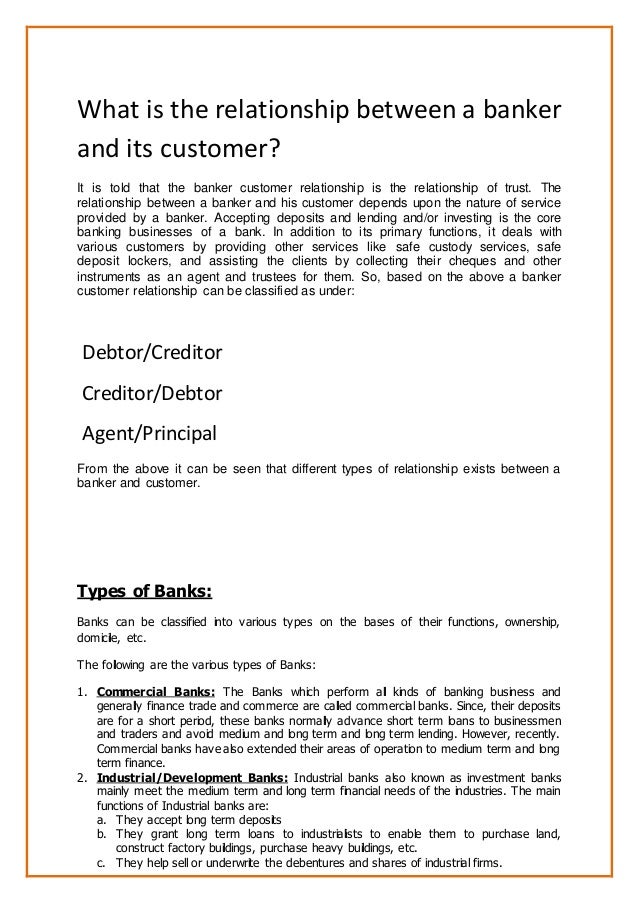Bankers Customer Service Training Manual
I am the Chief Amazement Officer at Shepard Presentations. As a customer service and experience expert, I help organizations create amazing customer and employee experiences. My books have appeared on bestseller lists including the New York Times, Wall Street Journal, USA Today and others. In 2008 the National Speakers Association inducted me into their Hall-of-Fame for lifetime achievement in the professional speaking industry. The author is a Forbes contributor. The opinions expressed are those of the writer. Shutterstock Customer service is not a department.
It is a philosophy to be embraced by every employee – from the CEO to the most recently hired. I’ve been preaching this for years. Yet it still surprises me that many companies don’t recognize the value of training their employees – all employees – in the area of customer service.

No, not everyone is trained the same. Someone on the front line, who has direct contact with customers, will be trained differently than someone in the warehouse, who has virtually no contact with a customer. But here is the point: At some point, everyone is going to impact the customer. Front-line customer service is obvious. People who interact directly with a customer must have a skillset and mindset to meet or exceed a customer’s expectations.
Has trained more than 30,000 business people in online webinars, public seminars, and on-site training Clients include many Fortune 500 companies, government agencies, military bases, and companies large and small across many industries, including manufacturing, banking.
Some of the more important traits and abilities might be friendliness, empathy, communication skills, problem solving, patience and more. Companies spend hours and days – sometimes weeks – training the people on the “front line.” Yet the people who aren’t trained are often the people who could have the greatest impact on the customer. As an example, the warehouse team member who improperly packs a box will create a problem for the customer when the package arrives and the contents are damaged or a part is missing.
Sure, that warehouse employee never talks to the customer, but what he or she does every day, picking and packing products, has a big impact on the customer. At a minimum, the warehouse employee needs to understand the impression the company is trying to create for the customer, and how he or she fits into a culture that is customer-focused. And, that takes training.
Training should start on the first day. There are some companies that won’t let an employee start doing what they were hired to do until they receive basic training. Is one of the best examples of this. All employees, also known as cast members, regardless of what they are hired to do, must go through what is called Traditions Training, where they learn the basics of the Disney philosophy, which is genuinely focused on the customer/guest. Is famous for its onboarding of employees with extensive training that starts immediately when employees come to work.

At the end of their basic training, new employees are offered a financial incentive to leave the company if they don’t think they will fit into the Zappos culture. If you’re not willing to live the Zappos mantra, which is Powered by Service, then you are encouraged to leave. Sure, Disney and Zappos are legends in the customer service world, but what about the rest of us? There are plenty of companies that deliver an amazing service experience that goes unrecognized. I recently was introduced to, a benefits technology company that helps HR professionals and employees select, manage and engage with their company’s benefits. I was impressed with how they handle onboarding and career development. And, customer service is a big part of that.
Oxford manual endocrinology. The authors and the publishers do not accept responsibility or legal liability for any errors in the text or for the misuse or misapplication of material in this work.
It’s mandatory that every new employee receives the training. The first week for new hires is not spent filling out paperwork or getting a nameplate for their workspace.

Rather they dive into a week-long training program called Orientationsolver, where employees get an in-depth look at the business – including the technology system that supports it and the service model that drives it. New hires are trained in customer service best practices and actually shadow experienced service center representatives as they take calls from customers. This hands-on, up-close training gives new hires an immediate appreciation for and better understanding of how their own role ultimately supports the business.
Bankers Customer Service Training Manual Doc
I’ve written about shadowing customer service and sales reps before. If a company wants to take this concept a step further, consider letting the employee actually handle some customer service calls. Yes, it may be a bit early in a new hire’s career to take a call, but remember this: Employees must realize that customer service training isn’t something they did, just once, on their first day or two after coming to work for the company. Customer service training is something they do, ongoing, to reinforce good habits and principles. So, when the time is right, let the employee go from shadowing the customer service rep to actually taking support calls. Businessolver has seen success with this approach. Annual benefits enrollment is the busiest time of year for the company and its customers, so the entire Businessolver team – from executives to interns and everyone in between – fields customer service calls to ensure every customer receives timely support and every employee gains a greater appreciation for the challenges customers face.
Starbucks Customer Service Training Manual
For a company to be truly customer-focused, an employee must understand how important customer service is to the company, how service fits into the culture and how he or she plays a role in it. That doesn’t happen spontaneously; it requires training. Every employee needs customer-service training. And now you know why. Shep Hyken is a customer service/CX expert, keynote speaker and NYT bestselling author. Learn about his latest book The Convenience Revolution. RECOMMENDED BY FORBES.
Suggest Bank Products Knowing a bank customer's current accounts and banking services helps bank employees be aware of the type of bank products to suggest. For instance, a bank teller may be aware that an elderly customer routinely writes checks, but does not have a debit card.
This opens the door for the teller to provide good customer service by recommending the debit card and explaining how to use one. Bureau of Labor Statistics notes, tellers not only describe available products, but also apply customer service skills by directing clients to the appropriate bank staff member for assistance. Bank employees should get to know customers by asking questions and demonstrating genuine interest in the client's banking needs to know which products would be best. Respond To Customers Promptly According to an article on Bankrate.com, one customer received a notice from the bank advising that a fee would be deducted from his account for rental of a safe-deposit box - but the notice arrived 10 days after the fee had already been deducted. Responding to or communicating with customers in a prompt, efficient manner is a critical aspect of bank customer service skills.
Go the extra mile with bank customers by following up with a prompt phone call when a question is asked and cannot be answered while the client is in the banking center. If a problem arises with a customer's bank account, respond quickly and calmly to resolve the matter. If a customer is irate, the bank employee should work to defuse the situation and maintain the relationship.
Be Informed Providing excellent customer service skills in a bank requires not only being aware of which products and services to offer, but being well-versed on all the attributes. Knowledge of staff is one area banks are rated on in customer service surveys, such as one conducted by the Consumers' Checkbook website. According to an August 2012 article in Consumer Reports, one complaint among bank customers is receiving conflicting information from bank employees when asking questions of the employees about policies.
Bank supervisors and head tellers should regularly meet with employees to verify that everyone at the bank is familiar with products and providing accurate information to customers.